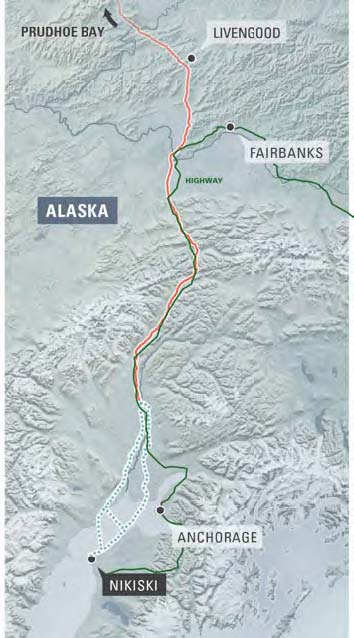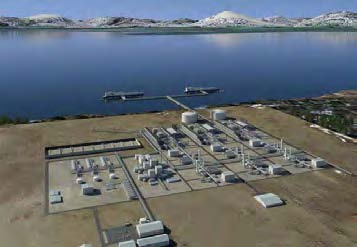Alaska LNG Project pushes forward
The Alaska LNG Project has reached another milestone with its formal request to the Federal Energy Regulatory Commission (FERC) to begin the pre-file process for the mega natural gas project. In doing so, the project triggers the National Environmental Policy Act (NEPA) permitting process. It will be the largest project ever permitted under NEPA.
In addition, the State of Alaska and Japan’s Ministry of Economy, Trade and Industry (METI) signed a memorandum of agreement regarding the Alaska LNG Project and other natural resource development opportunities in Alaska.
“This agreement is yet another key milestone in the state’s rapid advancement of the commercialization of our worldclass North Slope natural gas resources – to Alaskans first and then to markets beyond,” said Governor Parnell, noting that Japan is the world’s largest importer of LNG.
The memorandum with METI is part of the state’s ongoing efforts to engage the LNG markets in Asia, and it builds upon an existing agreement the state signed with the Japan Bank for International Cooperation (JBIC) in January. JBIC is a public financial institution that plays a critical role in financing and securing Japan’s LNG imports.
The Alaska LNG Project is a consortium of the three major North Slope producers, pipeline builder TransCanada, and the State of Alaska.
The FERC pre-file milestone sets the stage for the activity associated with the environmental review required for the siting, design, and permitting for construction of the proposed project.
“We look forward to leveraging the extensive strengths of all the parties involved in the FERC pre-file process,” said Steve Butt, Alaska LNG senior project manager.
This process is supported by a second season of summer field work, which is part of the project’s $500 million pre-frontend engineering design (pre-FEED) phase, which was formally entered in July. The 2014 summer field work employed approximately 250 people.
The primary objective of the summer field work was to collect the data necessary to support environmental permitting for the project and to support the routing and siting of project facilities. The majority of the work was focused along the pipeline route from Livengood to the proposed LNG liquefaction facility site in Nikiski.
Field work will continue next summer. After that, project sponsors will have to determine if they will embark on the much more costlier $2 billion front-end engineering and design phase in 2016. A final investment decision would await federal approval of construction and export.
A timeline outlined in the recently-filed FERC request anticipates the companies will file for FERC approval in September 2016 and will request approval be granted by July 2018. The timeline estimates a draft environmental impact statement will be released in the fall of 2017 before a final is issued in early 2018. Construction could begin later that year or in 2019, with gas flowing through the pipeline by 2025.
The producers and the state have already begun to engage the LNG sales market. In August, Energy Secretary Ernest Moniz exempted the project from a rule that has slowed the approvals for Lower 48 LNG export projects.
The Alaska LNG project would provide significant economic benefits to Alaskans, including state revenues, new job opportunities and access to decades of instate natural gas for homes and businesses in Alaska. The Alaska LNG project is anticipated to create up to 15,000 jobs during construction and approximately 1,000 jobs for operation of the project.
The proposed project facilities include a gas treatment plant located on the North Slope, transmission lines to transport gas from Prudhoe Bay and Point Thomson to the plant, an 800-mile large diameter pipeline with up to eight compression stations, at least five take-off points for instate gas delivery, and a liquefaction facility in the Nikiski area on the Kenai Peninsula.

The majority of the field work on the project this summer
focused along the pipeline route from Livengood to Nikiski.

Above is a rendering of the Alaska LNG terminal in Nikiski.
Return to newsletter headlines